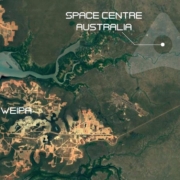The psychosocial imperative of food security preparedness
The dust has barely settled on the 2025 federal election and the returning government has already reaffirmed its commitment to delivering a national food security strategy. That’s a welcome and long-overdue step forward. But unless we address the psychological and cultural barriers that shape Australians’ perceptions of food security, even the most technically sound strategies will fail to achieve their intended effect.
Australia’s food system has long been defined by abundance. We produce far more than we consume, exporting more than 70 percent of our agricultural output. This surplus has bred a pervasive optimism bias: a belief that the system will consistently deliver, regardless of geopolitical shocks, climate impacts, or global economic volatility. We’ve been conditioned to believe in the robustness and efficiency of our markets, reinforced by the reliability of just-in-time supply chains that have rarely faltered, until recently.
ASPI’s National Food Security Preparedness Green Paper makes clear that this is no longer a safe assumption. From fertiliser to diesel fuel and key chemicals, Australia’s food production and supply chains rely on a complex web of international trade, much of which flows through increasingly fragile or contested trade routes. Rising geopolitical tensions, climate volatility and conflict-driven supply disruptions have exposed the cracks in this system.
Despite the lessons of the Covid-19 pandemic and subsequent global disruptions, many Australians continue to assume food security is a given. This is a classic case of normalcy bias, an underestimation of the likelihood and potential impact of a disaster simply because such a disruption hasn’t yet occurred on a scale we understand. In response to new threats and risks, the psychological reflex is often to downplay, delay or dismiss. This is a very natural response to cognitive dissonance, where threatening information clashes with long-held, comfortable beliefs.
This psychosocial gap between risk and perception has consequences. If policymakers are designing strategies based on credible, forward-looking assessments of threats and risks, but the public continues to believe everything is fine, then government interventions will lack traction.
One of the greatest threats to preparedness is our near-religious faith in free markets. Australia’s political and cultural narrative has long leaned heavily on the idea that markets, left unimpeded, will self-correct. This has produced enormous economic efficiencies and prosperity over decades, but it has also created a blind spot. Suggestions such as strategic reserves, investment in sovereign manufacturing, or diversification of supply chains are too often dismissed as unnecessary market interventions or throwbacks to protectionism.
But food security is not a theoretical exercise in economic purity; it is a cornerstone of national security. In crisis scenarios, market mechanisms often fail to function properly. Price signals do not deliver outcomes quickly enough. Supply gets hoarded. Trade barriers go up. In such moments, government action is necessary. It is crucial to frame this shift in language in a way that Australians understand—a pragmatic response to real threats rather than an abandonment of market principles.
Economic coercion is now also part of the national conversation on food security. The actions of China and now the United States are a salient reminder that nations can and will use access to markets and supply chains as tools of statecraft. While the risks to exports have received attention, our import dependencies, particularly for key agricultural inputs, leave us exposed to an equally serious form of coercion and disruption that can directly undermine our food production and national resilience.
Australia needs a deliberate and well-resourced psychosocial preparedness campaign, one that reframes food security not only as an agricultural or economic issue but as a whole-of-nation responsibility. This is not without precedent. The principles underpinning natural disaster readiness—clear public communication, local engagement, individual empowerment, and celebration of resilience—offer a powerful blueprint.
First and foremost, leadership must be visible, consistent and united. While Minister for Agriculture Julie Collins has rightly placed food security high on the agenda, she cannot carry the message alone. Ministers across portfolios must speak with one voice. Agency heads and industry leaders must reinforce the message that food security is a vital component of national resilience and security. There is no room for partisan or internal politics, because food security is a foundational concern.
Second, we must make the concept of preparedness accessible and actionable. Telling Australians to care about global fertiliser supply chains or nitrogen imports is unlikely to resonate unless we translate those concepts into immediate, tangible actions. That means encouraging households to keep basic reserves, supporting community-led resilience planning in regional areas, and helping food businesses diversify their suppliers and scenario-test disruptions. These efforts build agency, confidence and momentum.
Third, we need to foster a cultural shift toward what the Green Paper called a ‘preparedness mindset’: we live in a riskier world, but we can choose to meet that reality with calm, coordinated and practical responses. We should be celebrating examples of adaptation such as local councils and regional organisations that have developed resilience plans, agribusinesses that have secured alternative input sources, and communities that have invested in food hubs or cooperative storage facilities. These stories reinforce the message that preparedness is both possible and time critical.
Finally, this cultural shift must bridge the gap between the national security community and the public. Defence agencies and policymakers are planning for a contested future—one characterised by supply shocks, grey zone coercion and resource disruption. The public, meanwhile, still largely expects a future that looks like the past: stable, prosperous and largely unthreatened. Bridging this dangerous gap will require engagement with the Australian public, not just as consumers of government policy, but as participants in a national resilience effort.
Policy frameworks are vital, but without a whole-of-nation cultural and psychological shift to support them, any effect will be limited at a time when it’s desperately needed.



